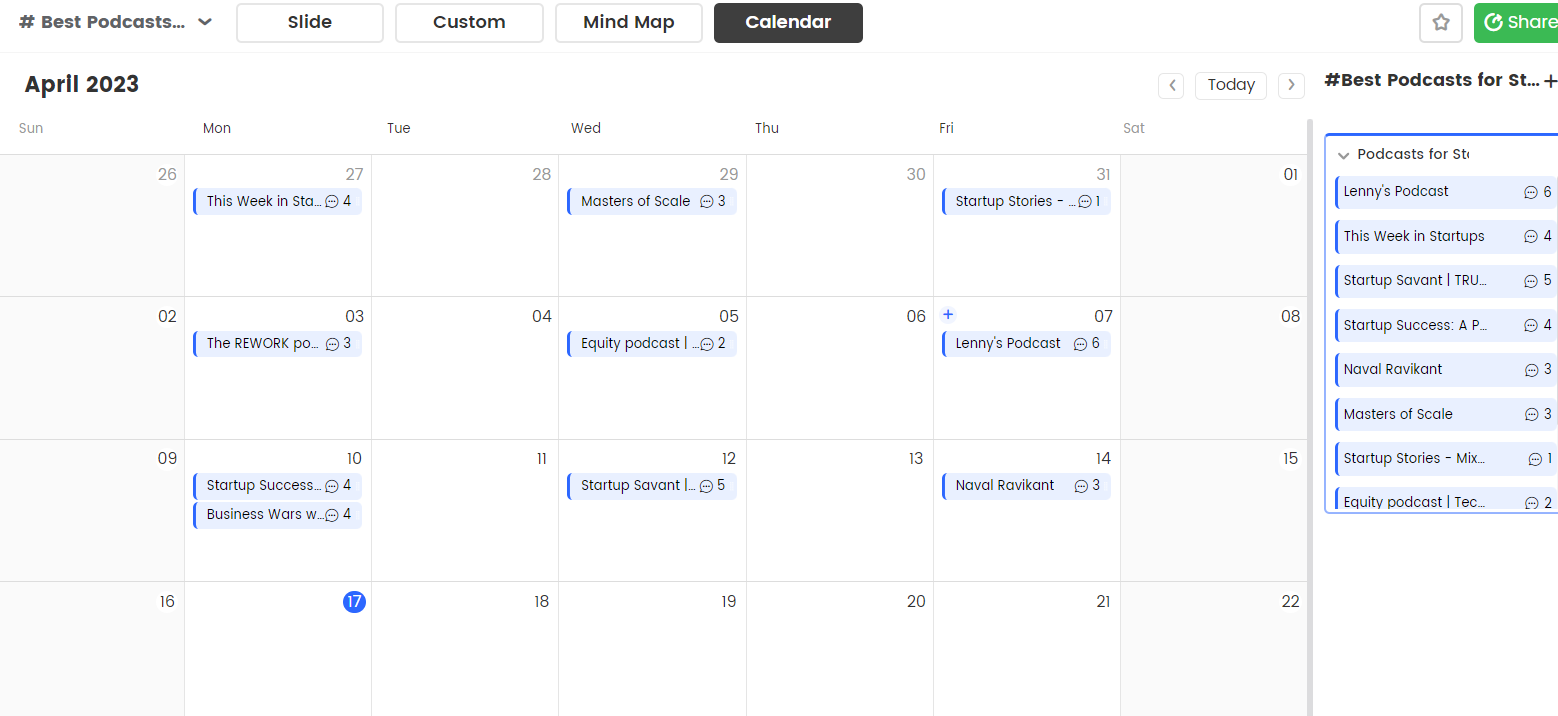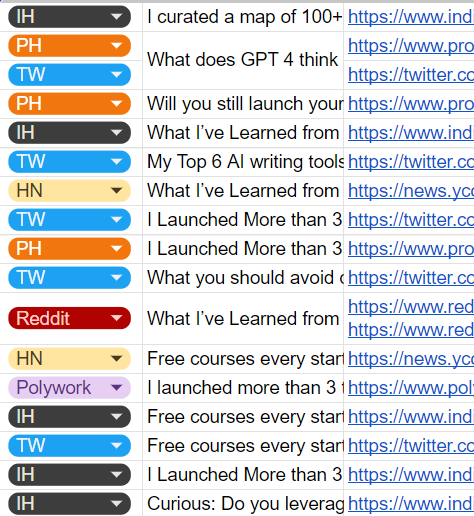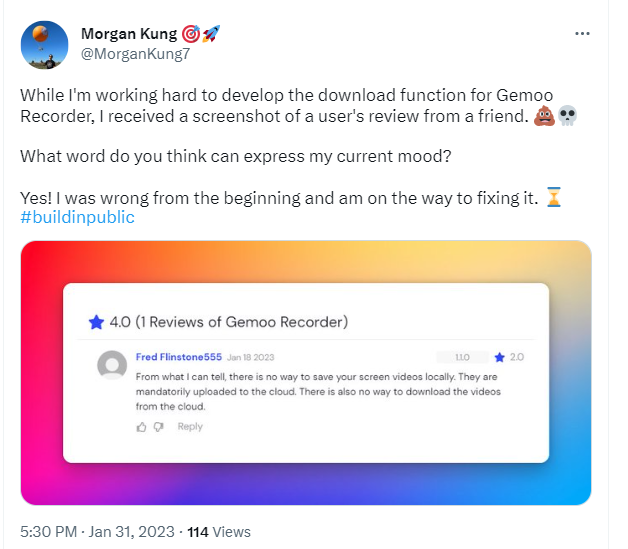Hi, this is Morgan
In my previous experience in the tech industry, I’ve seen a lot of founders sit behind the scenes, making strategic plans and possibly doing management jobs.
But time has changed. After studying a number of successful founders’ stories of a building in public, I suppose that building in public is becoming a new trend for founders and CEOs looking to dominate their product and humanize themselves, as well as a great way to do product growth.
So, today, I’m going to combine what I’ve learned from others, what I’ve read in books, and what I’ve done so far to list some steps for building in public. I hope this article is of great assistance to anyone interested in entering the BIP field.
I’ve already discussed BIP in one of my posts, as well as its benefits and drawbacks, so I’ll skip ahead to today’s topic. If you’re interested in my previous post about BIP, you can have a look.
How to Build in Public Step by Step
Step 1: Make A Primary Goal for Yourself
What is your motivation for building in public? Although there may be numerous goals along the way, you must first establish a primary goal for your journey in order to focus all of your energy and strength on orienting, and then you may receive some unexpected benefits along the way.
If you want to expand your network, spend more time engaging with other founders and joining more founders’ communities on Polywork, GrowthMentor, Startup Grind, Indie Hackers, Founders Network, and so on.
If you want to get more user feedback and recruit beta users, join more beta platforms and start voting polls more frequently, interact with all of your followers if possible, or hang out with your potential users in their communities while inviting them to try your products and give you feedback.
If you want to project a positive founder image in order to gain more trust, you must be aware of what should be posted and the type of image you want to project.
If you want to increase public brand awareness, focus more on properly promoting your products and paying attention to everything related to your product release.
Different goals result in different account contents and actions, so choose one before you begin.
Step 2: Create A Timeline of Posting and Engaging Days
In comparison to unscheduled posts, I’d prefer a strict timeline for what’s going to happen in the coming days.
As a startup founder or indie hacker, you must have a fairly clear timeline for your product for the entire year. Setting a timeline for your content based on your product plan will allow you to handle a butcher’s cleaver with ease if you want to build in public.
Being schedule allows you to handle multiple tasks at the same time. As a startup founder, you may have a lot on your plate, but building in public is time-consuming. When you are unable to continue posting or engaging on a regular basis, the quality of the building in public will rapidly deteriorate.
So, just stick to a strict timeline so you can be more comfortable when things pile up.

Podcasts I’m Going to Post and Share in April
Step 3: Make A List of What and When to Share Each Month
Building in public necessitates being active in public. As a result, it is preferable to post at least twice or three times per week.
As for me, I’ll make a list of how many posts I’m going to work on this week, what kinds of topics I’d like to share this week, what kinds of discussions I’d like to participate in this week, and so on.
Normally, I will send two or three posts per week, start three or four discussions on the founders’ community, and participate almost every day. To make posting more efficient, I usually plan out the topics I’m going to discuss over the weekend, write them on Monday or Tuesday, and then post them on Wednesday or Thursday. Then, on Friday, respond to comments and get involved.
In addition, I will plan my topics in advance, selecting topics based on hot trends or my own experience building products, doing marketing or growth, conducting SEO, or my insights into the latest technology events, and so on.
My lists really help me a lot on the journey of building in public, so I recommend that you all try it out.

One of My Content Lists and Where to Put Them on
Step 4: Get Engaged with More BIP Founders
You can sometimes get really good insights for a specific niche group. Connecting with other founders who BIP and gaining insights from them is a big step for me in learning BIP.
You can connect with them on Twitter by searching for “building in public” tags, indie hackers groups, etc. Polywork, ProductHunt, and a few subreddits come highly recommended by me.
The founders on those platforms are so generous and kind, and they’re willing to share their journey and what they’ve learned from it, which may help you avoid some potential pitfalls and be inspired.
Step 5: Engage with Your Audience Even There Are Just Few
People enjoy interacting with public builders. As a result, you must treat them in the same manner.
I know it will be frustrating when you only have a few followers or replies at first, but be patient and respond to them honestly and sincerely. It will be extremely beneficial if you are attempting to obtain user feedback.
I will definitely take every comment seriously and offer any insights I have for them. I can even invite them to conduct user interviews and provide my team with a wealth of information about product improvements, marketing strategies, and so on.
So, take each of your followers’ comments seriously, and they may surprise you, both for you and your product!
Step 6: Be Consistent in Your Success and Failure
Building in public has never been easy because it exposes both your strengths and weaknesses.
You will share the joy of every growth milestone, every revenue, and the pain of failures. Keep in mind that you must be genuine. Don’t falsify the data, and don’t dismiss a small success as unimportant.
People will be happy about your success, no matter how small, and they will be furious if you lie to them. To me, the most important aspect of building in public is, to be honest with both your audience and yourself; this is the best way to earn trust and improve your product.

I’m Posting My Failure of Missing The Video Download Button
What Else?
There are no additional steps to take, but it is important to note that you should treat every comment you receive with care, as well as your audience, even if it is a minor amount. I will frequently connect with my audience to invite them to interview or provide insights for my products, and we do benefit greatly from them, both for product and marketing and growth tips.
The above steps are based on my own understanding and experience, and as a newcomer in this field, I’m not doing so well in building in public. But I do hope that my advice can help more small startup founders succeed. If you have any additional suggestions, please contact me via Twitter.



